Do Fidgets Really Work? The Science Behind Fidget Tools
Affiliate and Referral links are used below to promote products I love and recommend. I receive a commission on any purchases made through these links. Please see my disclosure policy for more details. As an Amazon Associate, I earn from qualifying purchases.
If you've been on social media or reading any news articles the past few weeks, then you've probably seen the fidget spinner craze. I want to take a closer look at fidgets in general with this post today. You might be wondering, do fidgets REALLY work? That seems to be the question on everyone's mind right now.
So let's take a look at the science behind fidget tools. Don't worry, easy to understand language coming your way.
The term “fidget tool” or “fidget toy” has been around for a while. Many families who have children with special needs are familiar with these toys. I prefer to use the word term “fidget tool” since that is really what they are.
When a fidget tool like the fidget spinner hits mainstream, it brings up a lot of questions about fidgets in general. Why are fidgets even a thing? Why do some kids benefit from them? Why do some kids not benefit from them? What does the research say about fidgeting in general?
The Science Behind Fidget Tools
You've been in a meeting at work for a little over 15-30 minutes. Whether the speaker or presenter is highly engaging or not, you might start to notice your attention waning. You might be twirling your hair without even knowing it. You might be chewing gum. Maybe you prefer to twirl your pen or pencil. Maybe you are shaking your foot underneath the table. Even taking a sip of your drink could be considered re-focusing activity.
When I'm in a continuing education course for an entire day, I always have snacks with me or candy. Gum is a definite must. Sometimes I'll even take my computer and work on small blogging projects while listening (if I am not taking too many notes).
We all have coping skills to help us hold attention during times of listening or seated activities such as working.
The Average Attention Span
The average attention span for an adult is 20 minutes. As adults, we can often over ride our lack of attention by finding a way to focus through slight movement, or choosing to hold our attention for something that lasts longer. There's a reason the famous TED talks are only 18 minutes long. As adults, our brains can only handle focusing for about that amount of time.
Obviously for children, attention spans are much shorter. On average, a typically developing child can attend for 10-15 minutes, or up to 30 minutes if the task is novel (new to them).
If you have or know a child who is on the Autism spectrum, has ADD/ADHD, anxiety, or any other number of developmental difficulties, focusing is more of a challenge. Children with these diagnoses often have a higher (hypo-sensitive) or lower thresh-hold (hyper-sensitive) for incoming sensory input.
Sensory Integration and Focusing
What is sensory input and sensory integration? It is the way our brains receive messages from our senses through the central nervous system. A typically developing child or adult should be able to take these messages and turn them into an appropriate motor or behavioral response. Children or adults with ADD/ADHD, Autism Spectrum Disorder, Anxiety, etc. are not able to make appropriate responses to incoming sensory information.
The term “Sensory Integration” was first formulated by A. Jean Ayres, an Occupational Therapist in the 1960's. She describes it as ‘the neurological process that organizes sensation from one’s own body and from the environment and makes it possible to use the body effectively within the environment’. Not only are the 5 senses included in this, but also the vestibular and proprioceptive sensory systems.
In October of 2015, a study was done that found children who have attention disorders or are hyperactive are able to concentrate better when they are allowed to move. The more important part of this study found that typically developing children had the opposite response to movement during a time when they were suppose to focus. Many may have trouble focusing if movement or other noises are going on when they need to be focusing on a primary task.
The theory behind why movement helps those with attention and hyperactive disorders is that it increases the alertness of the brain. Their brains are in a constant state of under-arousal. In other words, it takes more sensory input than normal for them to recognize it and pay attention. Movement can help “wake up” the brain from this state and help prepare it to focus and attend.
Another researcher, John Ratey, M.D., found that even a small amount of movement, such as fidgeting with the hands, increases the levels of neurotransmitters dopamine and norepinephrine in the way that ADHD medications do. Both of these chemicals help with attention and focus. (source)
According to Sydney Zentall, Ph.D., using a sense that is different from the one needed for the primary task is what will help with focusing the brain on the primary task (for example, listening to music while reading). (source)
There are some differing thoughts on this. According to Child psychologist Dr. Sherri McClurg., she believes “fidgets are great for kids with anxiety or spectrum disorders; kids with ADHD will struggle to use them.” She went on to explain that many children on the spectrum or with anxiety can benefit from fidgets. However she believes that many children with ADD/ADHD can become focused on the fidget instead of using it as a tool to help them focus better on the task at hand. (source).
Why Are Fidgets Needed Anyway? Kids should be outside playing!
I could not agree with this more. The problem is that the main education system in the United States only provides limited times for children to go outside and play during the school day. Not the mention the amount of homework that many students have to complete once they get home. Kids just aren't given the time to move and play.
Angela Hanscom, pediatric Occupational Therapist and author of Barefoot and Balanced, suggests that children should be outdoors playing for at least 3 hours a day. That may seem extreme, but comparing it to what children typically get in a day movement wise, she might not be that far off.
Many schools across the country provide ONE, 20 minute recess time for elementary students each day. Plus with physical education classes being cut or limited to half a semester, children just are not getting enough time to reset during their long school days.
When you add homework times on to the end of an 7 to 8 hour school day, that leaves even less time for children to get out and move the way they need to.
If children are going to be expected to learn, focus, and thrive in an environment like this, than they need to be given the tools to help them maintain that “just right” level of arousal. For many, that could mean fidgets. For others, it could mean movement breaks throughout the school day. It really will depend on the child's needs. Every child is different.
Key Takeaways About Fidgets
More research is needed to see what role fidgets play in a child's day to help them maintain focus. One type of fidget tool or “toy” should never be the one size fits all solution. That simply is not the case, as we saw from differing thoughts in the research above.
It's important to realize that fidgets work well with some kids and not with others. As the research above stated, typically developing children can have the opposite response to fidgets during times when they need to focus than what fidgets are intended for (I think the current debate about fidget spinners highlights this well).
That's not to say ALL children don't need breaks or time to reset, they definitely DO! It's important to make those reset times part of their day. You may need break up lessons into shorter chunks, with fidget or movement in between for resets. But it's also important to provide tools for those who do need extra support by fidgeting during times when focus and concentration are needed.
It's our job as educators, therapists, and parents to figure out what a child needs in order to reach this “just right” level or arousal for focus and attention.
Fidgets definitely have a place in our toolbox of figuring out what a child needs in order learn effectively. They should never be ruled out across the board. However it is also important to remember that not all children will benefit from fidgets, especially in a classroom setting. It may take some trial and error to figure that out. But it is important to try.
How Do I Get Started Introducing Fidgets?
It can be a challenge to try and support all the different needs of multiple children in a classroom or homeschool environment.
Here are some things to keep in mind when you are looking to add fidgets into your day:
- Fidgets should be relatively cheap and durable. They should also be small enough to be used under a table, not produce a noise that is distracting, and be used without distracting others.
- It should provide sensory input, whether through texture, shape, or sensations that is calming and one that a child enjoys (stay away from sensory textures, shapes, or sensations that a child does not enjoy. This will have the opposite effect of calming).
- What time of day does a child seem most fidgety? When would they benefit the most from using the fidget tool?
- Will there be an amount of time that the child can use the fidget tool? What rules need to be set up around it?
Are you looking for ways to add fidgets into your classroom or school day? My friends over at The Inspired Treehouse have some ideas for How to Introduce Fidget Toys in the Classroom.
My friend Colleen over at The OT Toolbox also has a great post on how to use fidget in your home for homework (also great tips for homeschoolers!).
Here are some of my favorite fidget tools that you can try.
And see why my friend Dayna over at Lemon Lime Adventures thinks there are 5 reasons fidget spinners should be banned from every classroom in America. It's not what you think!
I'd love to hear what you think about the science behind fidget tools. Leave your questions or comments below!
Congratulations! You finished this post. Now get up and take a “brain break“.
You May Also Like:
References:
Armes, Cory., M.Ed. “New Study Suggests Fidgeting Helps Students with ADHD Learn.” December 2015. Scientific Learning.
Beck, Julie. “Stress Toys: Mindlessness with a Purpose?” July 2015. The Atlantic.
Gallo, Carmine. “The Science Behind TED's 18 Minute Rule.” March 2014. Linkedin.
Hullinger, Jessica. “The Science of Why We Fidget When We Work.” March 2015. Fast Company.
Kamenetz, Anya. “Let Kids Fidget In Class: Why It Can Be Good for Those with ADHD.” May 2015. Mindshift.
Mennillo, Michelle. “Sensory Integration: Back to Basics.” Occupational Therapy for Children.
Roland, Rotz. Ph.D., Wright, Sarah D. “The Body-Brain Connection: How Fidgeting Sharpens Focus.” ADDitude.
Sarver, D.E., Rapport, M.D., Kofler, M.J. et al. J Abnorm Child Psychol (2015) 43: 1219. doi:10.1007/s10802-015-0011-1
Stop Touching Things! The Role of Fidget Toys. Occupational Therapy for Children.
T. A. Hartanto, C. E. Krafft, A. M. Iosif, and J. B. Schweitzer. A trial-by-trial analysis reveals more intense physical activity is associated with better cognitive control performance in attention-deficit/hyperactivity disorder. Child Neuropsychology Vol. 22 , Iss. 5,2016
“What is Normal Attention Span?” October 2013. Day 2 Day Parenting Q&A.
Wetherbee, Katie. “Fidget Toys: Do They Really Work?” November 2011.

Heather Greutman, COTA
Heather Greutman is a Certified Occupational Therapy Assistant with experience in school-based OT services for preschool through high school. She uses her background to share child development tips, tools, and strategies for parents, educators, and therapists. She is the author of many ebooks including The Basics of Fine Motor Skills, and Basics of Pre-Writing Skills, and co-author of Sensory Processing Explained: A Handbook for Parents and Educators.

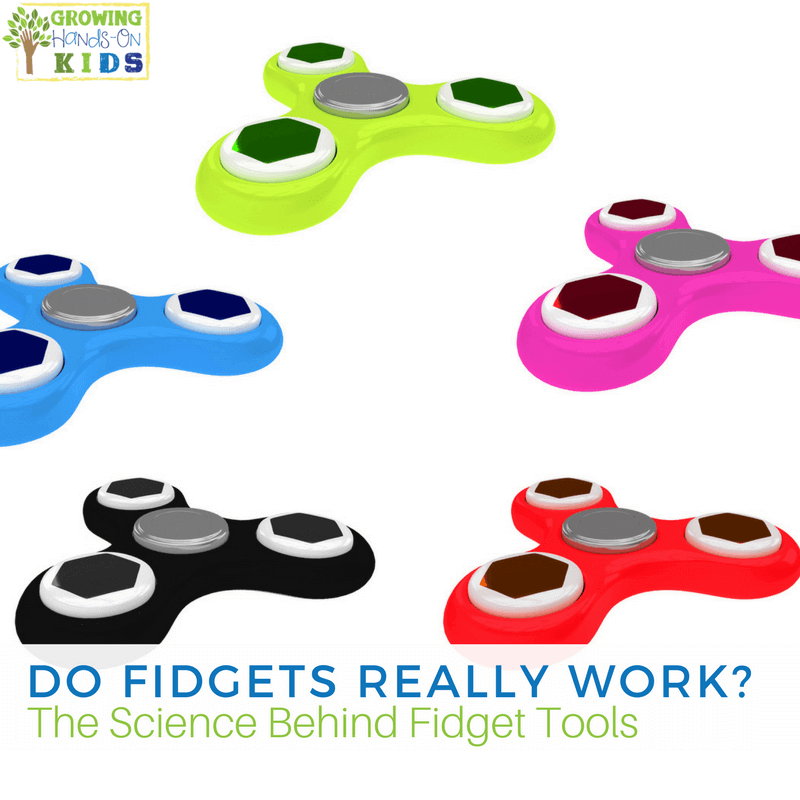

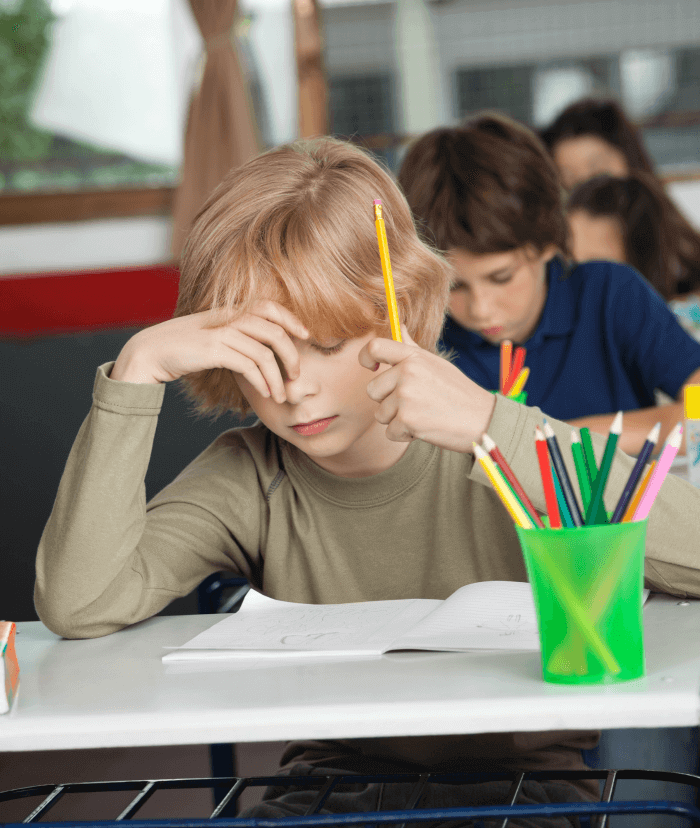

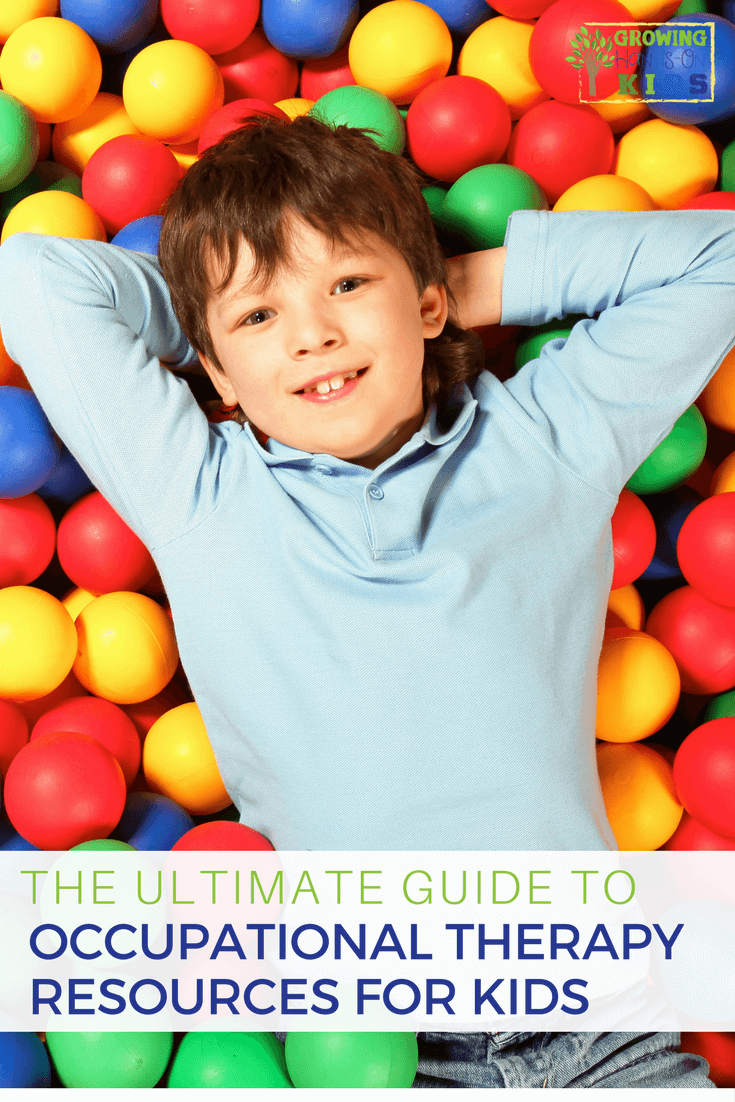
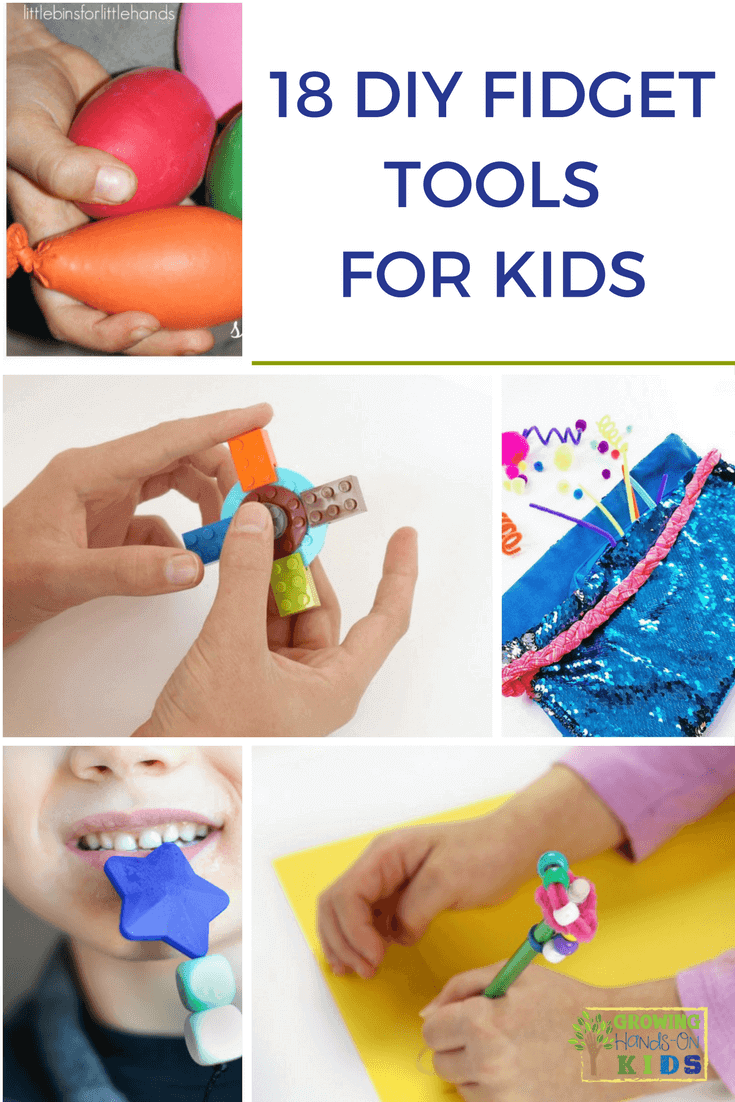
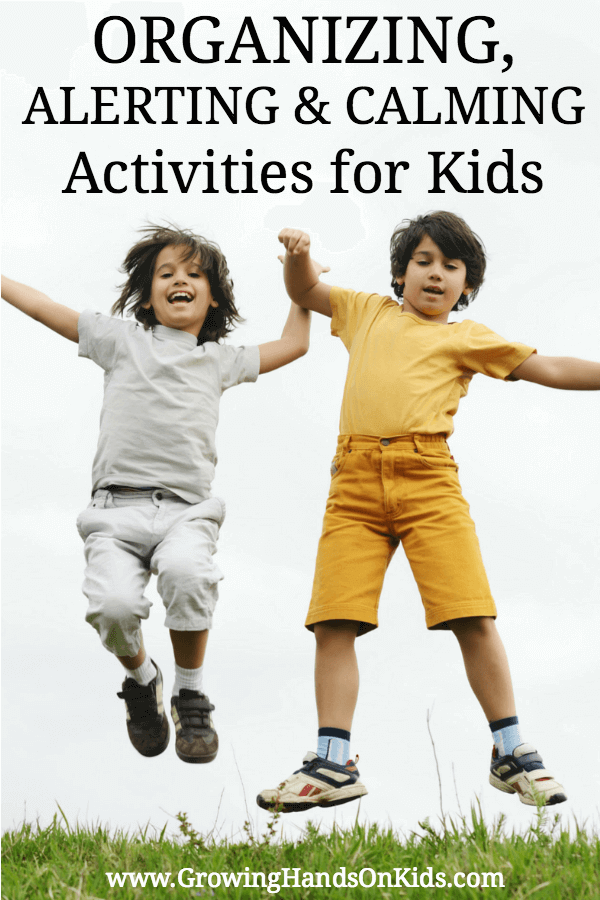
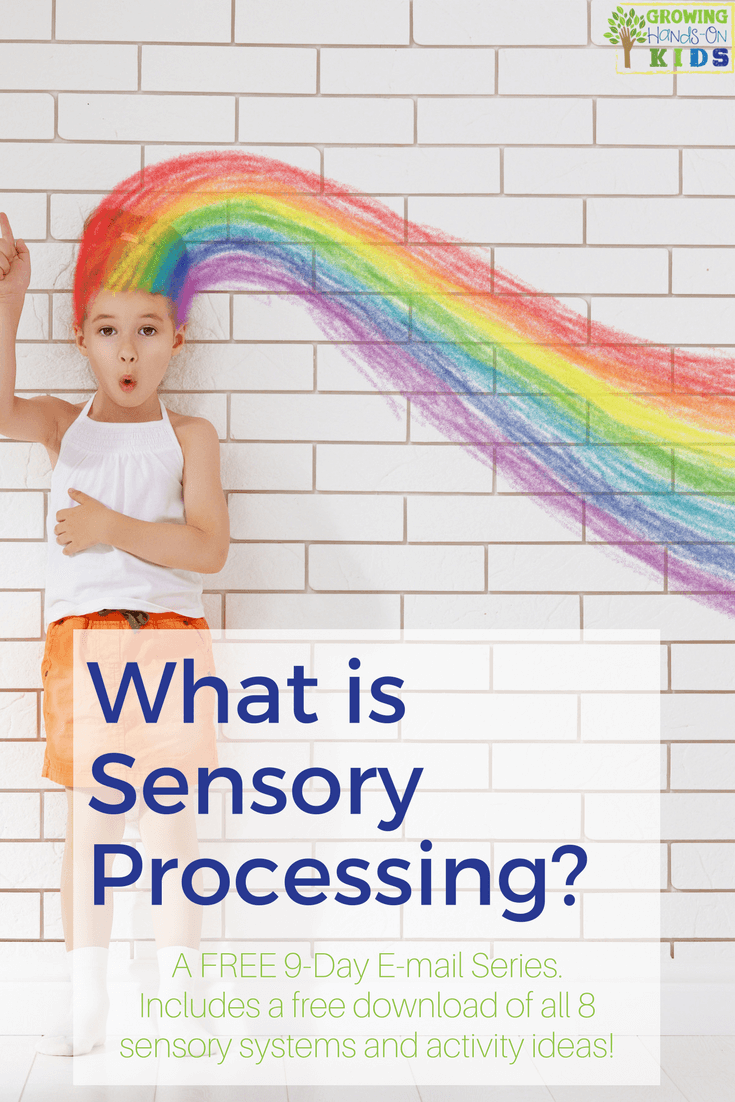
You are right I have ADHD and it is hard to focus without figeting
It is lovely and very kind to be shared the resources. I am Vietnamese, there is no training of OT, so i need a lot of information for the children with special needs.
Thanks so much.
This is a great article and thanks for the thorough research about fidget spinners. Some people say it is good or bad. There are some cases we see how it can positively or negatively affect children, especially in classroom settings. Will share this article with my colleague. I’d love to hear from them what they think of this kind of sensory fidget and what works for their child!
Great post Heather! I’m writing an artivle on fidgets as well, and will definitely link to yours! Wonderful information here!
Thanks Jaime! 🙂
There are other articles on this that appear to be linked.but I cant get them. It says Error this page does not exist. How can I get.them?
Hi Pam,
All of the text in green are the links I have included. I just went through the entire post and clicked on all of them to make sure they are working and they are all coming up for me. I’m sorry, I’m not sure what would be going on on your end to get errors on them.
Great post Heather! This fidget debate has been an awesome way to open up the conversation about how and why we might use fidgets with kids in the classroom. It’s great to delve into some of the research behind why they work and which kids they work best for. Thanks for the info!
Thanks Claire! I really appreciate it. It has definitely opened up good discussion on this topic. I hope that it all paves the way for more research!